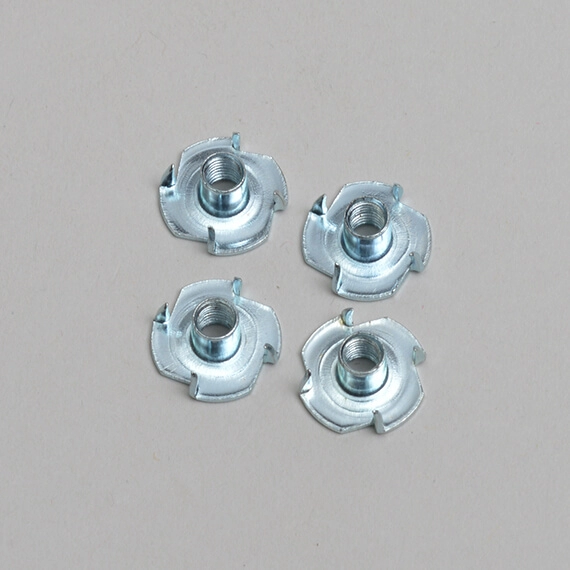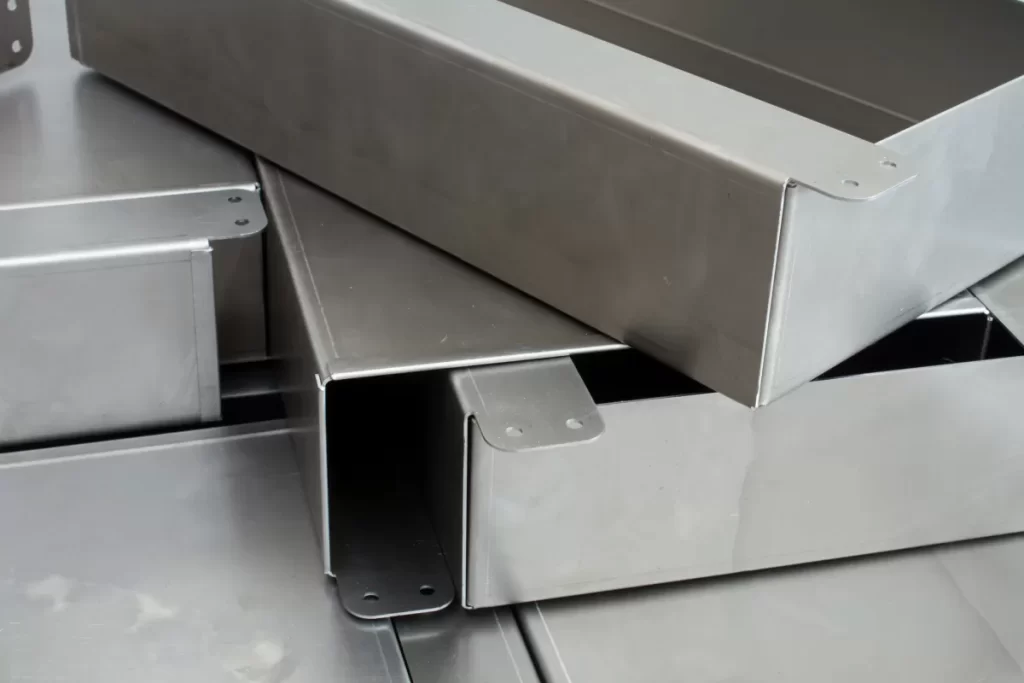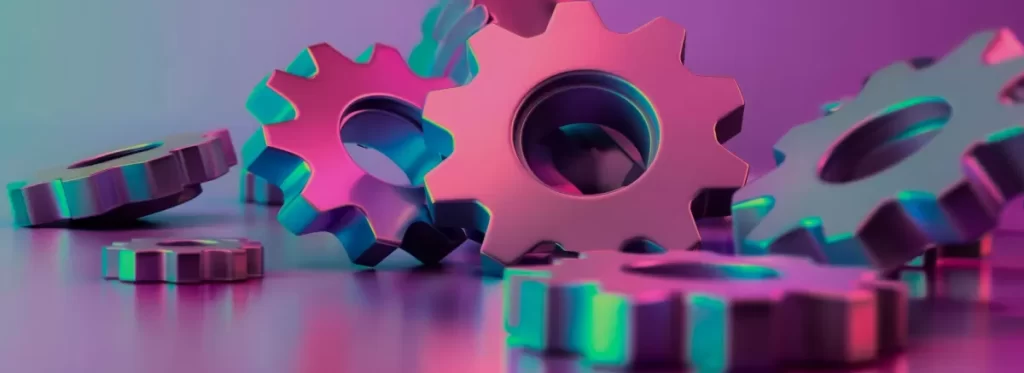What Are Captive Nuts
Captive nuts are specially designed fasteners that remain securely held in place within a panel or component, preventing them from falling out during assembly. Unlike standard nuts that can move freely, captive nuts provide a fixed position which simplifies and speeds up the fastening process.
Types of Captive Nuts
- Cage Nuts: Consist of a square nut encased in a spring steel cage, allowing easy snap-in installation and replacement.
- Clip Nuts: Feature a spring-steel clip that grips the panel edge, providing a captive threaded connection without welding or riveting.
- Weld Nuts: Attached permanently to a surface by welding, offering a strong, fixed fastening point.
- Self-Clinching Nuts: Pressed into thin sheets of, they embed themselves firmly through a cold-forming process for flush, vibration-resistant fit.
Materials and Suitability
Common materials include stainless steel, brass, and aluminum, each chosen based on strength, corrosion resistance, and application environment. Stainless steel is ideal for heavy-duty or outdoor use, brass offers excellent corrosion resistance and electrical conductivity, and aluminum provides lightweight solutions suited for aerospace and automotive industries.
Difference from Standard Nuts
Unlike standard nuts, captive nuts are designed for fixed positioning, which reduces assembly time and prevents nut loss during handling. This fixed nature enhances efficiency in CNC machining and other manufacturing processes by enabling faster, more accurate fastening without needing to hold the nut manually.
Key Benefits of Using Captive Nuts in CNC Machining

Captive nuts bring several advantages that make them a smart choice for CNC machining projects.
Enhanced Efficiency
Because captive nuts stay fixed in place, they significantly speed up assembly. No more fumbling with loose nuts or struggling to hold pieces together while tightening bolts—this saves time and reduces frustration on the shop floor.
Durability
These nuts provide secure fastening, especially in high vibration environments like automotive or aerospace parts. They hold tight and prevent loosening, ensuring your assembly stays solid under stress.
Precision
CNC machining demands tight tolerances, and captive nuts deliver. Their fixed position and stability maintain alignment and precision, crucial for precision fastening solutions in metal, plastic, or composite materials.
Cost Effectiveness
By reducing assembly time and minimizing errors, captive nuts help cut labor costs and lower the risk of rework. This efficiency leads to better productivity and cost savings over the long run.
Versatility
Captive nuts work well with a variety of materials common in CNC machining, including metals, plastics, and composites. This makes them a go-to fastener for many industries, from electronics to furniture manufacturing.
Using captive nuts means a faster, more reliable assembly process without sacrificing quality or durability.
Applications of Captive Nuts Across Industries
Captive nuts are widely used across various industries thanks to their ability to provide strong, reliable fastening with ease. In CNC machining, they help maintain precision by ensuring parts align consistently during assembly. This makes them essential for high-tolerance components where exact positioning matters.
In the automotive industry, captive nuts are a go-to solution for fastening panels, frames, and various components. They offer durable and secure fastening that holds up well under constant vibration and stress.
The aerospace sector benefits from captive nuts because they provide lightweight and reliable fastening critical for safety and performance in aircraft components. Their strength and stability make them ideal for challenging environments.
In electronics, captive nuts secure circuit boards and enclosures efficiently, contributing to streamlined production and maintenance. They help reduce assembly time while ensuring the components stay firmly in place.
For furniture manufacturing, captive nuts simplify assembly and support modular designs. They make it easier to join parts quickly without compromising on strength, making them popular in both commercial and home furniture applications.
How to Choose the Right Captive Nut for Your Project
Picking the right captive nut for your project means looking at a few key factors. First, consider the material—stainless steel is great for corrosion resistance, brass works well for conductivity, and aluminum is lightweight. Next, check the thread size to match your bolts or screws perfectly. Think about the load requirements too; heavier loads need stronger nuts. Also, the environment matters—outdoor or high-moisture areas call for corrosion-resistant options.
Make sure the captive nut fits your CNC machining process. Whether you’re milling or turning, the nut should be compatible with your equipment for easy and precise installation. At HYCNC, we offer a wide range of customizable sizes, materials, and coatings designed specifically to meet these needs.
Here are some quick tips for choosing the best nut for outdoor or harsh environments:
- Use stainless steel or specially coated nuts to prevent rust
- Avoid materials that can corrode or weaken over time
- Confirm that the nut’s design suits your panel thickness and fastening method
Choosing right means smoother assembly and longer-lasting results, especially in CNC machining projects where precision is key.
Installation Guide for Captive Nuts
Installing captive nuts properly is key to getting the best hold and long-lasting results in your CNC machining projects. Here’s a simple guide on how to install the most common types like self-clinching nuts and cage nuts.
Step by Step Installing Captive Nuts
-
Self-clinching nuts
- Drill the right-size hole in your metal workpiece.
- Place the nut into the hole.
- Use a press tool to apply force. The nut clinches itself into the sheet metal as the knurled collar embeds.
- Check it’s flush and secure before assembly.
-
Cage nuts
- Insert the cage into the square or rectangular cutout in the panel.
- The spring steel cage snaps into place and holds the nut securely.
- Now you can fasten with screws or bolts.
Tools Needed
- Press tools (manual or hydraulic) – essential for self-clinching nuts
- Welders – needed for weld nuts if applicable
- Simple hand tools or pliers – useful for cage nuts manual insertion
Best Practices for CNC Projects
- Always verify the hole size and panel thickness match the nut’s specifications.
- Use proper press force to avoid damaging the nut or sheet metal.
- Make sure the nut is perfectly aligned to prevent cross-threading later.
- Clean any metal shavings before inserting the nut to ensure smooth installation.
Common Mistakes to Avoid
- Improper alignment – can ruin threads and cause loose fittings.
- Over tightening during installation – can deform the nut or the panel.
- Using the wrong hole size – leads to weak fastening or difficult assembly.
- Skipping cleaning – leftover debris can damage threads or reduce nut grip.
By following these steps and tips, your captive nuts will install cleanly, hold strong, and keep your CNC machining fasteners reliable.
Why Choose HYCNC for Captive Nuts
At HYCNC, we focus on delivering high-quality captive nuts that are precision-engineered for reliability in CNC machining projects. Our manufacturing process ensures every nut meets strict standards, giving you consistent performance whether it’s for industrial or hobby use.
We offer customization options to fit your specific needs, including thread sizes, materials, and coatings. This tailored approach makes HYCNC a go-to partner for businesses looking to optimize their fastening solutions.
With a strong local presence and global supply chain, HYCNC guarantees fast delivery and quick turnaround times, so your projects stay on schedule. Plus, our team provides expert support to help you choose the right captive nuts and guide you through installation best practices.
Finally, our competitive pricing ensures you get cost-effective solutions without sacrificing quality, making HYCNC ideal for both large scale manufacturing and smaller CNC machining projects.
FAQs About Captive Nuts
What’s the difference between captive nuts and regular nuts?
Captive nuts are designed to stay fixed in place, which means they won’t spin or fall out during assembly. Regular nuts are loose and need to be held or tightened from both sides. Captive nuts save time and improve accuracy, especially in CNC machining where precision matters.
Can captive nuts handle high vibration environments?
Yes. Many captive nuts, like self-clinching and weld nuts, provide a secure fastening that resists loosening under vibration. Stainless steel captive nuts are especially good for automotive and aerospace parts where vibrations are a constant challenge.
What materials work best for CNC machining captive nuts?
Stainless steel and brass are popular because they resist corrosion and wear. Aluminum works for lighter applications but isn’t as durable under heavy stress. The right material depends on your project’s environment and load requirements.
Do I need special tools to install captive nuts?
It depends on the type. Self-clinching nuts usually need a press tool, weld nuts require welding equipment, but cage nuts and clip nuts can often be installed by hand or with simple tools. HYCNC can guide you on the easiest installation method for your project.
Can HYCNC provide custom captive nut solutions?
Absolutely. HYCNC offers customizable sizes, materials, and coatings tailored for your CNC projects. Whether you need something standard or unique, their expert support helps you pick the right captive nuts that fit perfectly and perform reliably.




